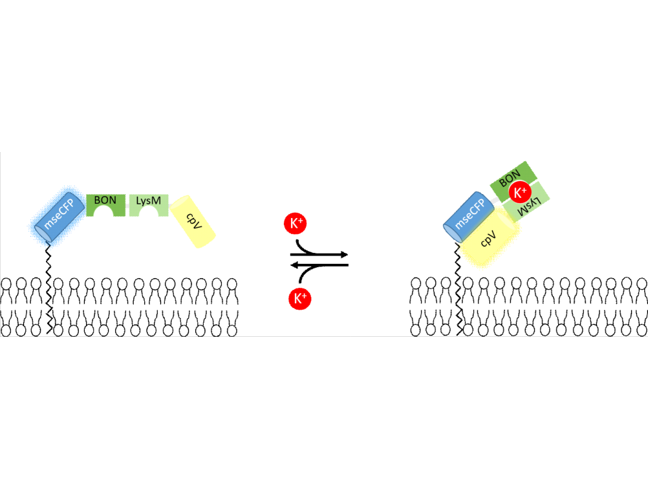Extracellular Potassium Ion Indicator
Development of a genetically encoded extracellular potassium ion indicator
Constant intra- and extracellular potassium ion (K+) concentration is essential for survival and correct function of cells. In cardiomyocytes, pathologically elevated extracellular K+ concentration may induce high frequency arrythmia leading to sudden cardiac death. It is speculated that a high frequency de- and repolarization of cardiomyocytes may lead to extracellular K+ accumulation and intracellular K+ loss which, in theory, could depolarize cells and stabilize arrythmias. To measure extra- and intracellular K+ concentrations in cardiomyocytes, we apply and modify intracellular genetically encoded potassium ion indicators (GEPIIs), which are based on the bacterial K+-binding protein in-between of two fluorescence proteins to visualize K+ elevation by Förster resonance energy transfer. Because N-glycosylation of GEPII in the secretory pathway removes their K+ sensitivity, we develop novel mutated GEPII proteins without N-glycosylation suited for measurements of extracellular K+ concentration. In the future, these proteins will allow to investigate the effects of fast electrical activity on extracellular K+ homeostasis in cardiac tissue and the brain.


